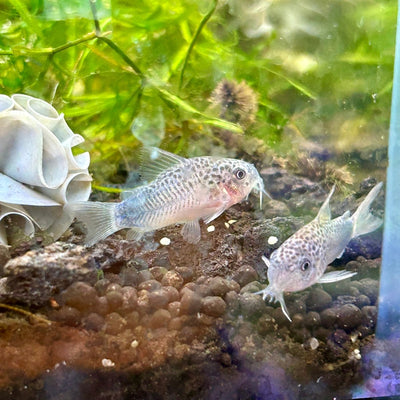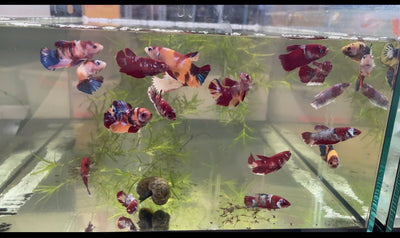Betta fish, also known as Siamese fighting fish, are popular aquarium pets but can be susceptible to a variety of diseases if their environment or care is not optimal. Here are some common diseases of Betta fish, their symptoms, and treatment options:
1. Fin Rot
- Cause: Bacterial or fungal infection, often due to poor water quality or injury.
-
Symptoms:
- Fraying or discolored edges of fins.
- Fins may appear shorter or "melted."
-
Treatment:
- Improve water quality by frequent water changes.
- Use antibacterial or antifungal medications (e.g., aquarium salt or commercial fin rot remedies).
2. Ich (White Spot Disease)
- Cause: Protozoan parasite (Ichthyophthirius multifiliis).
-
Symptoms:
- Tiny white spots on the body, fins, and gills.
- Rubbing against surfaces or lethargy.
-
Treatment:
- Increase water temperature slightly (to about 80°F/27°C) to speed up the parasite's life cycle.
- Use anti-parasite medications like ich treatment.
3. Velvet Disease
- Cause: Parasite (Oodinium).
-
Symptoms:
- Golden or rust-colored dust on the fish.
- Scratching against objects, lethargy, and loss of appetite.
-
Treatment:
- Dim lighting and use a velvet treatment medication (copper-based is common).
- Improve water quality.
4. Swim Bladder Disease
- Cause: Overfeeding, constipation, or bacterial infection.
-
Symptoms:
- Difficulty swimming (floating at the surface or sinking to the bottom).
- Fish may swim sideways or upside down.
-
Treatment:
- Fast the fish for 1-2 days.
- Offer a cooked, peeled pea (a natural laxative) if constipation is suspected.
- If bacterial, use appropriate antibiotics.
5. Dropsy
- Cause: Bacterial infection leading to fluid buildup.
-
Symptoms:
- Bloated body with pinecone-like raised scales.
- Lethargy and loss of appetite.
-
Treatment:
- Isolate the fish.
- Treat with antibiotics or anti-bacterial medications.
- Often fatal if not caught early.
6. Popeye (Exophthalmia)
- Cause: Bacterial infection, injury, or poor water quality.
-
Symptoms:
- One or both eyes bulging outwards.
-
Treatment:
- Improve water quality.
- Treat with antibiotics (e.g., Erythromycin).
7. Ammonia Poisoning
- Cause: Elevated ammonia levels due to poor filtration or overcrowding.
-
Symptoms:
- Red or inflamed gills.
- Fish gasping at the surface or acting lethargic.
-
Treatment:
- Test and lower ammonia levels using water conditioners.
- Regular water changes and ensure proper filtration.
8. Mouth Fungus (Columnaris)
- Cause: Bacterial infection (Flavobacterium columnare).
-
Symptoms:
- Cotton-like growth around the mouth.
- White or gray patches on the body or fins.
-
Treatment:
- Use anti-bacterial treatments (e.g., aquarium antibiotics).
- Maintain clean water and proper temperature.
9. Constipation
- Cause: Overfeeding or lack of dietary fiber.
-
Symptoms:
- Swollen abdomen.
- Difficulty passing waste.
-
Treatment:
- Fast the fish for 1-2 days.
- Feed a blanched pea or high-fiber diet.
10. Gill Flukes
- Cause: Parasites (flatworms).
-
Symptoms:
- Gasping at the surface.
- Scratching against objects.
- Inflamed or swollen gills.
-
Treatment:
- Anti-parasitic medications (e.g., Praziquantel).
- Improve water quality.
Prevention Tips:
- Maintain pristine water conditions (ammonia, nitrite, and nitrate levels should be controlled).
- Feed a balanced diet and avoid overfeeding.
- Use a proper-sized tank (at least 5 gallons) with a filter and heater.
- Quarantine new fish before introducing them to the main tank.
- Regularly monitor water temperature, pH, and cleanliness.
By promptly identifying and addressing symptoms, you can improve the health and well-being of your Betta fish.






